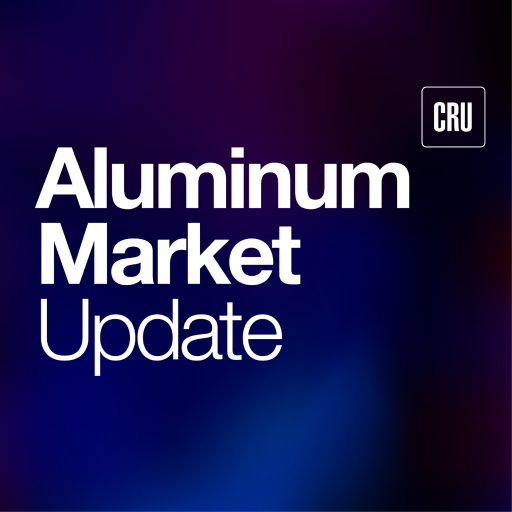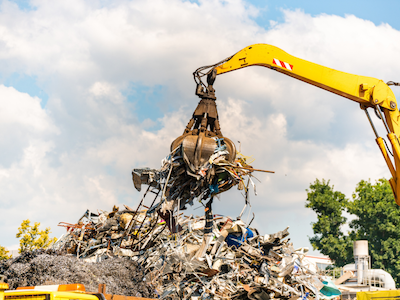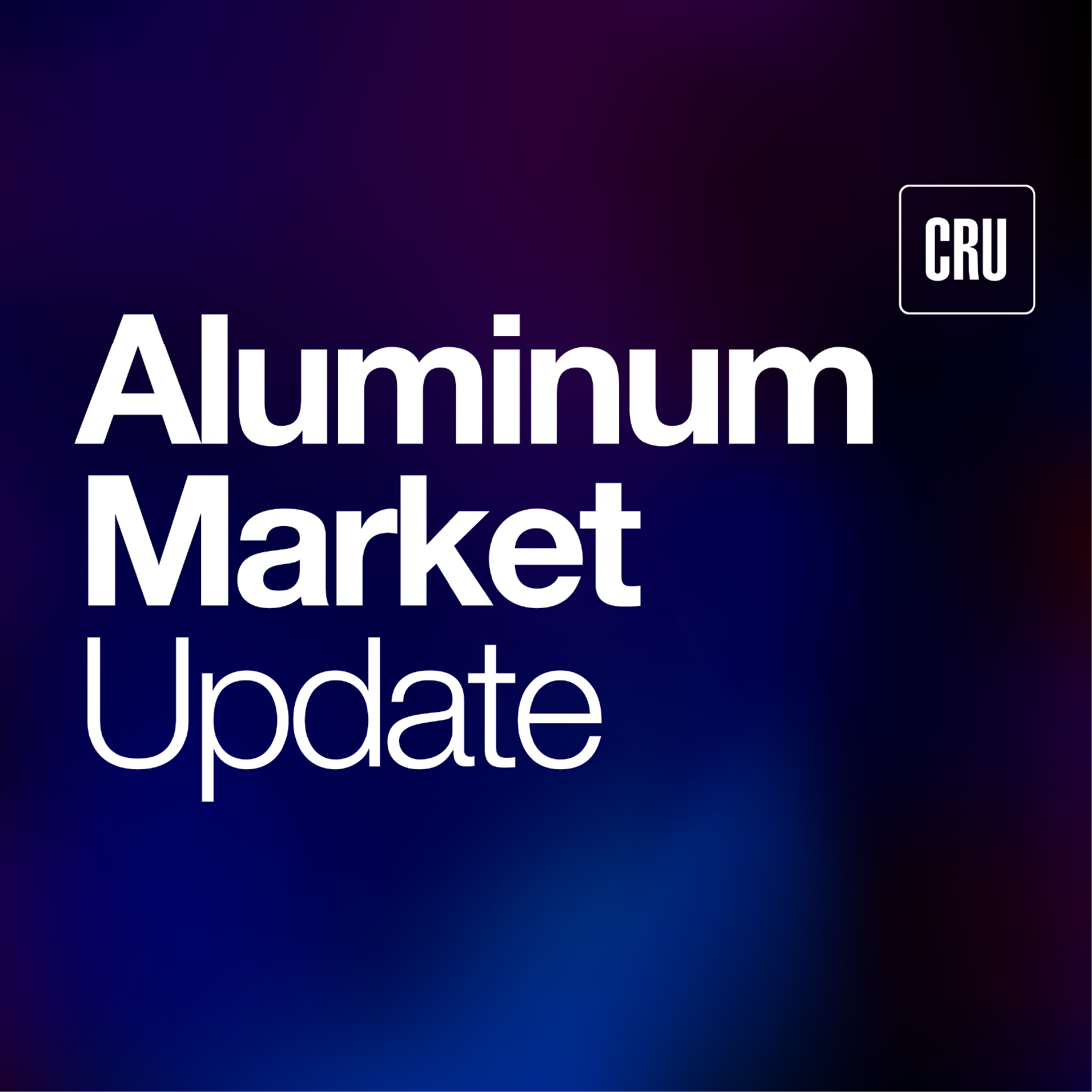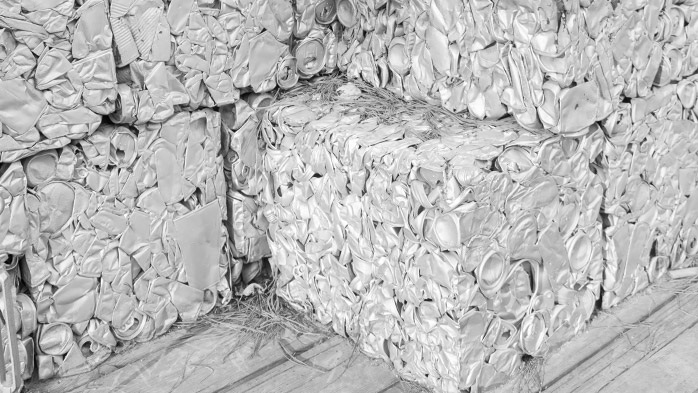Aluminum Scrap Markets

October 16, 2025
Examining export bans on UBC and mills in China
Written by Greg Wittbecker
There have been long-rumored efforts to ban the export of used beverage containers (UBC) and certain high-grade, segregated alloy scrap grades.
The thinking is that those exports are a potential national security concern, allowing valuable aluminum recycled materials to leave the U.S. when we operate with a massive primary deficit.
Let’s be clear, most U.S. scrap exports are not UBC nor are they high-grade segregated alloys. The largest share of our scrap exports are post-consumer, obsolete grades in the form of zorba and twitch. These are derived from auto shredding and are mixed alloys that historically have gone to the secondary alloy market for production of diecast alloys.
The domestic secondary market has been unable to fully absorb the volume of zorba and twitch, hence the processors have sought exports to monetize their output.
There is a need to develop the technology to sort these grades to get them to mill-grade specification allowing sheet mills and extruders to use them. Efforts to develop this technology are ongoing and are yielding encouraging results.
UBC supply woes have nothing to do with exports
UBC are a vexing challenge to the aluminum industry. Having directed Alcoa’s UBC recycling strategy 15 years ago, I understand the problem of boosting recycling rates to get these valuable units back into domestic consumption. Our recycling rates languish in the mid-40s as a percentage of generation.
So it’s disconcerting to buyers of UBC to see them being exported. However, stopping exports won’t solve the problem of our low recycling rate. We must attack the structural problems of domestic recycling.
One problem is that investment is needed to make recycling available to those areas where UBC are concentrated. The other problem is changing consumer behavior. Many consumers do not instinctively think about recycling. We have grown up throwing things away, not repurposing them. This is the social re-engineering challenge we need to fix. Much of that fix involves making recycling as simple as throwing it away. That means convenience must be job 1.
Price does a good job of allocating supply now
The suggestion that we ban exports of UBC is ill-timed. UBC prices in the domestic market are trading at around 50% of the value of Midwest P1020. That’s around $1.00 per pound with Midwest P1020 trading at $2.0146 as of Oct. 13.
While the percentage to Midwest is near historical lows, the absolute price is still good. Conversions with a host of retail scrap yards indicate UBC are fetching $0.60-$0.70 per pound at the scale. That is a good price for those consumers inclined to sell them versus recycling them for free through curbside programs or drop-off centers.
Concurrently, imports of UBC are surging as the absolute price of UBC in the U.S. offers a superior return to exporters in the Middle East, South America and even in Europe. In fact, European industry executives are alarmed by the sudden rise in exports to the U.S. and are considering an export ban on all grades of scrap. Their motivation is different than than of the U.S. and we will get into that in another article (carbon border adjustment mechanism or tax being a big reason).
Current conditions in China
China is on a steep learning curve to appreciate the advantage of using recycled metals in its downstream fabrication plants. The country’s rapid expansion of primary production since 2000 meant primary metal was plentiful, convenient to use and relatively cheap. There was no big incentive to mess with scrap.
This was a similar attitude in Western mill buyers’ minds for much of the 20th century. That changed when primary metal prices started to spike, and environmental sensitivity rose. Scrap consumption was pushed up dramatically.
China is the middle stages of experiencing that same shift. Massive secondary capacity is being built even as primary production is being capped by Beijing at 45 million metric tons/year. Consumers in China recognize that cheap, plentiful primary metal will become a thing of the past.
Chinese mills are slowly embracing UBC as a mainstream component of production. However, their pricing is conservative. Presently, our sources indicate that Chinese mills are willing to pay around 82% of LME cash price for baled UBC delivered China. Based on LME prices as of Oct. 13, that equates to $2,268 per ton. That’s $1.02 per pound or parity to the U.S. domestic price. Surveys of published prices in Shanghai ($2,281), Zhejiang Province ($2,242) and Jiangsu Province ($2,266) closely correlate to that formula.
Freight becomes critical factor
Chinese mills are matching their American counterparts on a delivered basis. So, it comes down to freight costs to determine competitiveness. Current nominal container costs from Long Beach (California) are $1,300-$1,700 per 20-foot container. We assume 18 metric tons per container, meaning that costs per ton are $72-$94 per ton or about $0.0325-$0.0424 cents per pound. There is a cost to stuff the container with the baled material. We will assume $0.01 per pound for that cost so a total expense of $0.0425-$0.0525 per pound.
Those costs are competitive compared to the costs a domestic UBC processor would have to supply a domestic mill.
Why this matters
Chinese mills are being strategic in their current bidding structure. They understand the value of U.S. Midwest P1020 and its direct influence on the value of scrap. Their delivered China bids at 82% of LME are nearly in lockstep with U.S. domestic mills’ bidding at 50% of Midwest duty paid.
What’s worrisome about long-term Chinese bids for UBC
Mills in China are bidding basis, the next best alternative option for exporters in the U.S., Europe, Southeast Asia, and the Middle East.
However, the Chinese mills are ultimately watching the Shanghai Futures Exchange (SHFE) for guidance. The SHFE dictates domestic primary metal replacement for these mills. Current UBC bids at 82% of LME equate to 77% of SHFE (LME at $2,766 versus SHFE at $2,933 basis current exchange rates).
Seventy-seven percent of SHFE is probably the high end of what Chinese mills should be paying, considering melt loss and direct processing costs.
The thing that should be most worrisome to the world at large is the performance of SHFE over time once the primary aluminum production cap truly gets embedded into the Chinese domestic market.
Chinese mills have enjoyed a unique luxury for decades – the domestic primary market has rarely priced in much of a physical premium over and above SHFE. This was because there was so much primary produced everywhere in China, there was no need to create much of a premium market.
That could change now that domestic production is capped, and demand should continue to grow. This should mean China will be compelled to import more, either from Russia or Western sources.
The Chinese market could simply push up the SHFE versus the LME to suck in more foreign primary. It could also see more physical premiums being paid versus SHFE to do the job.
Either way, it creates more leverage for the Chinese mills to pay more for UBC versus their Western competition.
While Chinese mills are bidding no more for UBC that their U.S. counterparts today, the market should be concerned about their ability to boost bids if and when SHFE or SHFE+ physical premiums go higher.
We then have a situation where Chinese mills would draw more UBC ex the U.S.
This scenario helps rationalize the argument for banning UBC exports from the U.S.
I was a skeptic about the timing of this export ban when I first heard about it. However, as I studied the relative price valuations, the threat is greater than I previously appreciated.
Trade developments on China’s restriction of rare earth exports are likely to strengthen arguments for multiple export bans from the U.S.
We should expect to see this UBC export ban gain traction in coming months.







